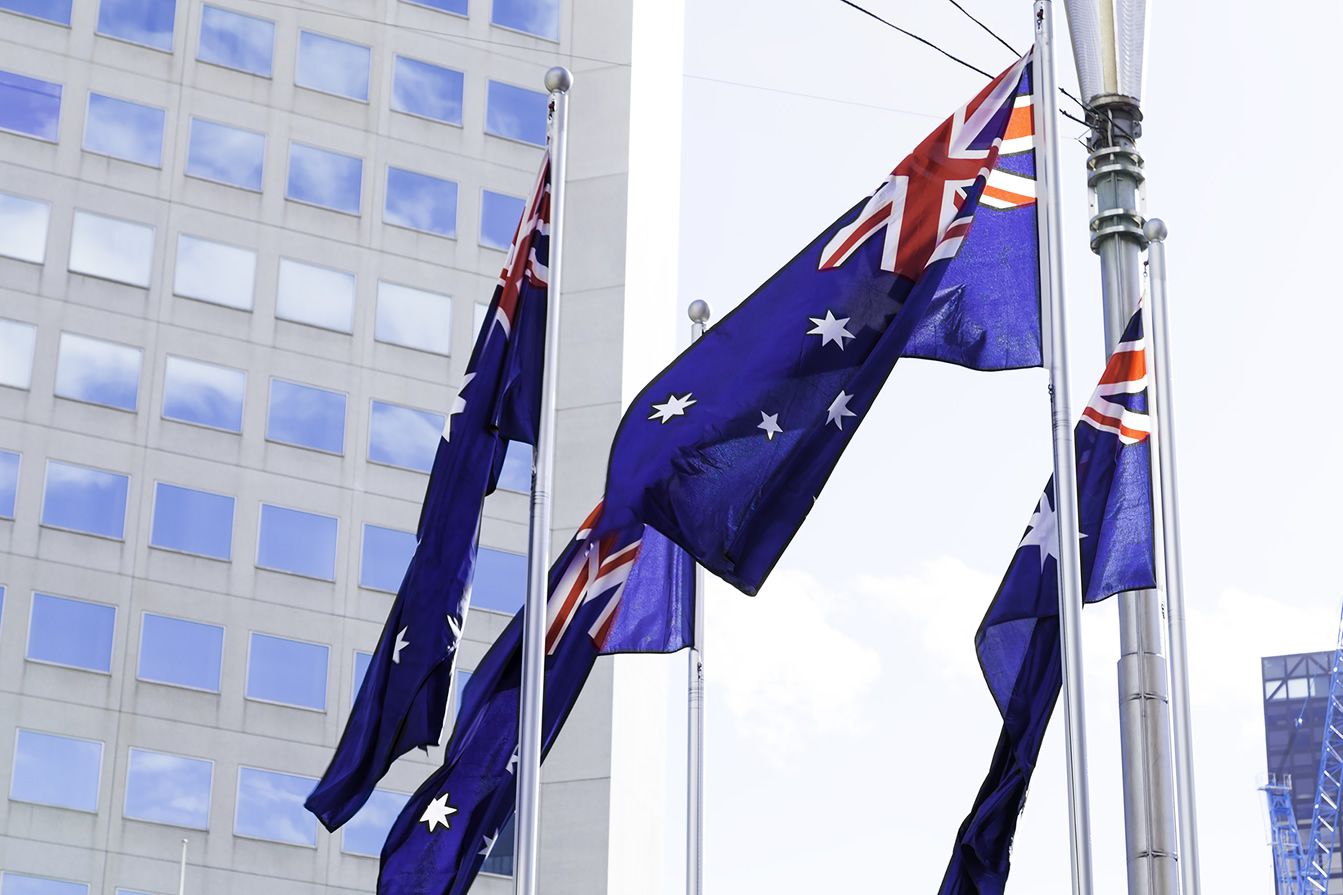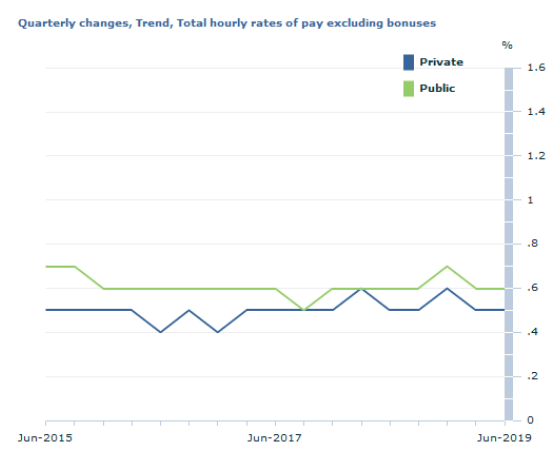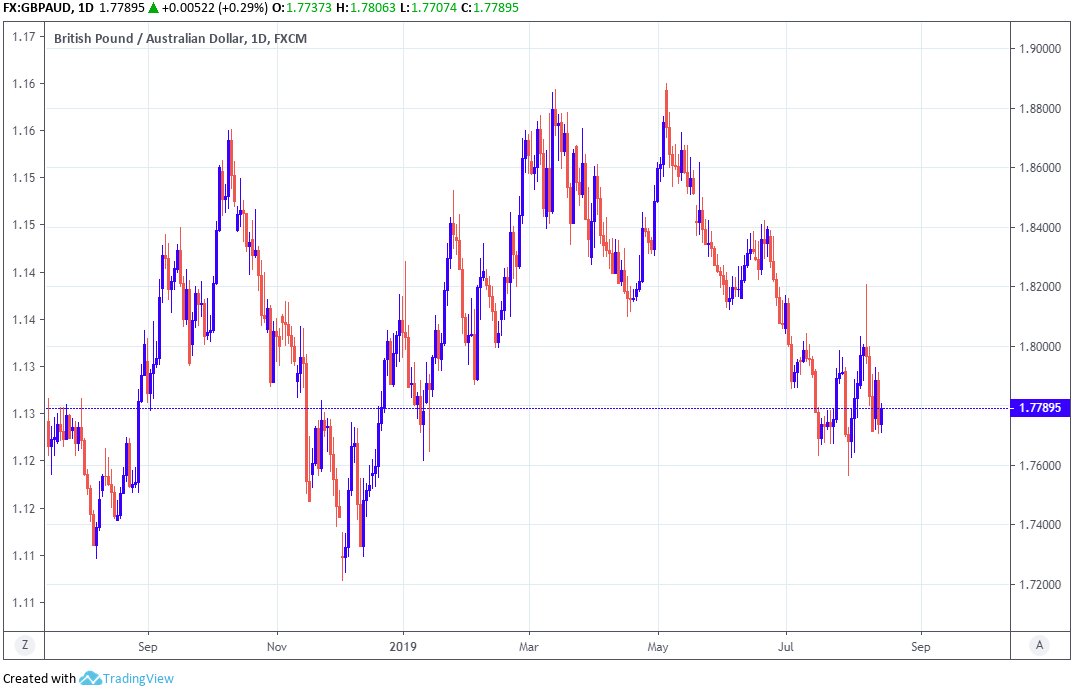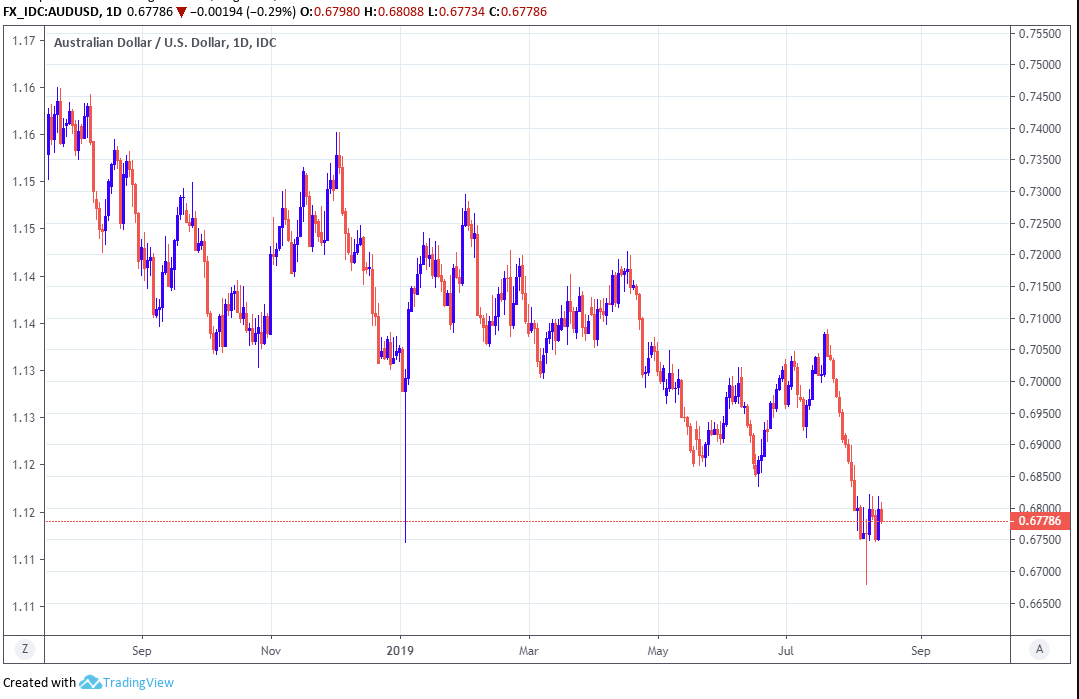Australian Dollar Gains Fade as Economic Concerns Overshadow U.S. Tariff Rethink
- Written by: James Skinner

Image © Adobe Images
- AUD slips after CNY data overshadows wages and tariff reprieve.
- Aussie wage growth surprises as data shows China is struggling.
- Aussie jobs data incoming overnight, threatens AUD says MUFG.
- AUD momentum remains to the downside says Commerzbank.
The Australian Dollar eased lower in early trading Wednesday after better-than-expected wage figures and a surprise U.S. rethink of its latest round of trade tariffs were overshadowed by the possible implications of some dire Chinese economic numbers released overnight.
Pound Sterling, which is enjoying a moment of now-rare stability, rose against a retreating Australian Dollar in the morning session Wednesday while the AUD/USD exchange rate was also in decline. Losses came after a modest pickup in the second-quarter wage price index was lost on traders amid concerns about the implications of a dire set of industrial production numbers from China that were released overnight.
Pay growth was 0.6% in seasonally adjusted terms during the recent quarter, Australian Bureau of Statistics data revealed, when markets were looking for only a 0.5% increase. This left wages up 2.3% for the year to the end of June, which might have been welcome news for an inflation-seeking Reserve Bank of Australia (RBA) but a hat-trick of disappointing Chinese figures meant the Aussie failed to capitalise on this boost.
"Ongoing weak wage growth and strong competition will likely see market sector prices growth remain contained, while housing (a large component of the CPI) is expected to remain weak. Consequently, we expect further policy easing," says Alan Oster, chief economist at National Australia Bank (NAB). "We see a further cash rate cut in November to a new record low of 0.75% but do not rule out the risk of further cuts or unconventional policy measures."
Markets care about the wage data because pay growth leads to inflation, which has been below the RBA's 2% target for years now and has already seen the bank cut its interest rate twice this year, to a new record low of 1%. That's hurt the Aussie by reducing the returns investors can earn from parking cash in the Australian bond market.

Above: Australian wage growth at quarterly intervals. Source: Australian Bureau of Statistics.
"AUD/USD traded in a 30pip range around 0.6795 after Australian Q2 19 wage price data was stronger than expected, but Chinese July economic data was weaker than expected. Australian wages rose by 0.6%/qtr (consensus: 0.5%) in Q2, to be 2.3% higher over the year. However 2.3%/yr wage growth remains well‑below the 3.5% rate of wage growth that the RBA consider to be “normal”," says Kim Mundy, a strategist at Commonwealth Bank of Australia.
Chinese industrial production growth slumped to an annualised 4.8% during July, down from 6.3% previously and when the market consensus was for an increase of 6%. Fixed asset investment growth also declined from 5.8% to 5.7%, although the fall in Chinese retail sales was the steepest of all. Sales growth was just 7.6% annualised last month, down from 9.8% previously and when markets were looking for an increase of 8.6%.
Australia's Dollar is underwritten in no small part by a gigantic commodity trade with China, which leaves the Aussie and Australia caught between the rock that is a troubled China and the hard place that is a slowing global economy. The trade relationship explains the positive correlation between the Australian Dollar and China's currency, as well as why investors tend to view the Aussie as a proxy for the Renminbi.
"That’s shockingly weak by Chinese standards and underlines that regardless of tariff can-kicking, the Chinese economy is still in real difficulty. I repeat, enjoy the calm while it lasts," says Michael Every, a strategist at Rabobank in Hong Kong.

Above: Pound-to-Australian-Dollar rate shown at daily intervals.
The Renminbi was in retreat Wednesday as a result of the dire economic data, with the offshore USD/CNH rate 0.27% higher at 7.0331, which helped drag the Aussie lower. The AUD/USD rate was 0.28% lower at 0.6773 during the morning session while the Pound-to-Aussie rate was 0.22% higher at 1.7787.
"AUD/USD remains on the defensive near term, it has not overcome any resistance of note and continues to hold sideways. The market has recently eroded the .6738 January 2019 low and .6720, the 2016-2019 support line (connects the lows) BUT did not CLOSE below here," says Karen Jones, head of technical analysis at Commerzbank. "We would allow for some consolidation/correction near term. Rallies will need to regain the .6832 June low as an absolute minimum in order to alleviate immediate downside pressure."

Above: AUD/USD rate shown at daily intervals.
Wednesday's data comes just hours ahead of jobs figures for July, which will also be watched closely by the RBA because the bank needs lower unemployment if it is ever to see the kind of wage growth it says is necessary to get the consumer price index back into the 2%-to-3% target band.
Consensus is looking for the Aussie economy to have created 14.2k new jobs last month and for the unemployment rate to hold steady at 5.2% when the numbers are released at 02:30 London time on Tuesday. Any disappointment however, would likely weigh on the Aussie because it could encourage more speculation about further RBA rate cuts, not least of all because the bank has explicitly tied future policy changes to developments in the labour market.
"The release of the latest Australian employment report for July will be scrutinized closely for further evidence to justify looser monetary policy," says Lee Hardman at MUFG. "With inflation below target, the RBA has limited tolerance for labour market disappointment. A weaker than expected employment report for July would add to downward pressure on the Aussie."
Wednesday's losses follow a broad rally in so-called risk assets that took place on Tuesday after the U.S. Trade Representative said it would scale back the list of Chinese products due to be subjected to new tariffs in September, giving commodity and growth sensitive assets a boost.
The Office of the U.S. Trade Representative said certain products will now be removed from a list of Chinese export goods, worth more than $300 bn each year, that were due to be hit with a 10% tariff from September 01. It cited reasons of health, safety, national security and "other factors".
Tariffs on some of the remaining goods that have not been excluded will be delayed until December 15, including cell phones, laptop computers, video game consoles, computer monitors and some toys as well clothing items. But other tariffs may still go into effect in September, although it's not clear how far reaching they'll be.
The apparent step back from the brink of another escalation in the trade dispute between the world's two largest economies offered global markets immediate respite from what had been mounting pressure over a rapidly deteriorating global economic outlook ever since President Donald Trump had announced the 10% tariff on August 01.
"The latest decision to delay the implementation of a portion of the tariffs has provided some temporary relief for the Aussie but this is not likely to last," Hardman says. "The challenging external conditions should remain a heavy weight on the Aussie. At the same time, domestic economic fundamentals are also encouraging a weaker Aussie."
Time to move your money? Get 3-5% more currency than your bank would offer by using the services of foreign exchange specialists at RationalFX. A specialist broker can deliver you an exchange rate closer to the real market rate, thereby saving you substantial quantities of currency. Find out more here.
* Advertisement




